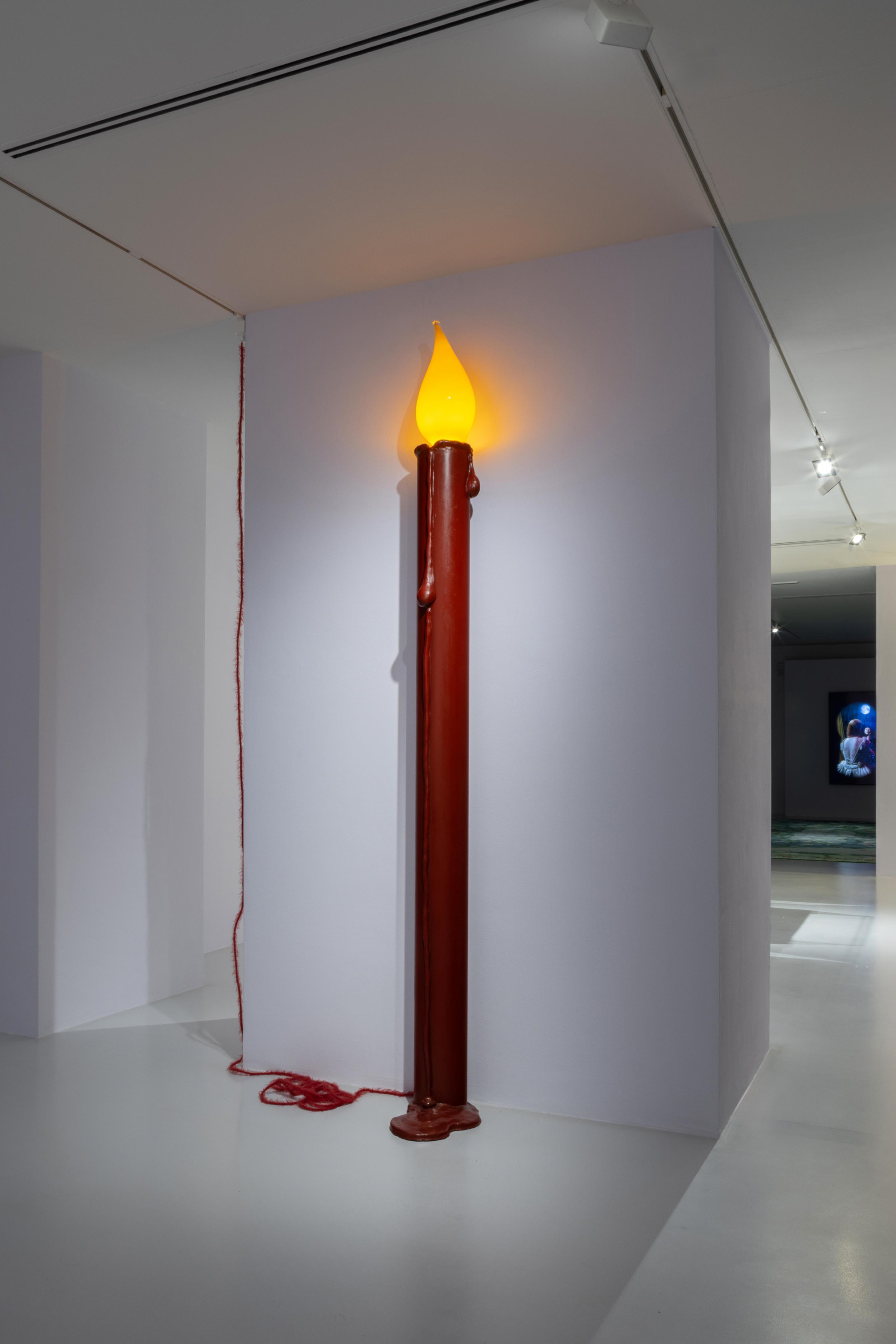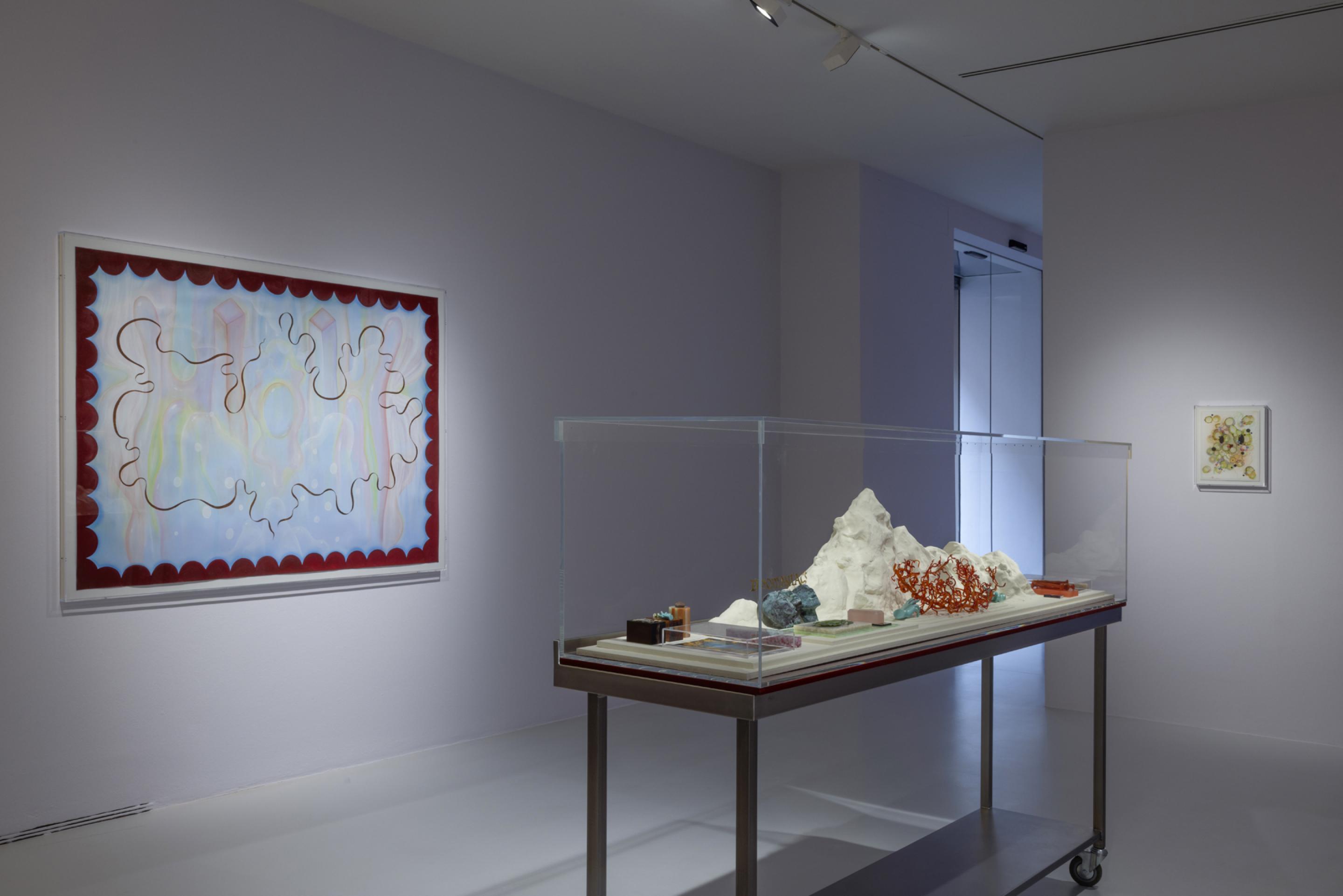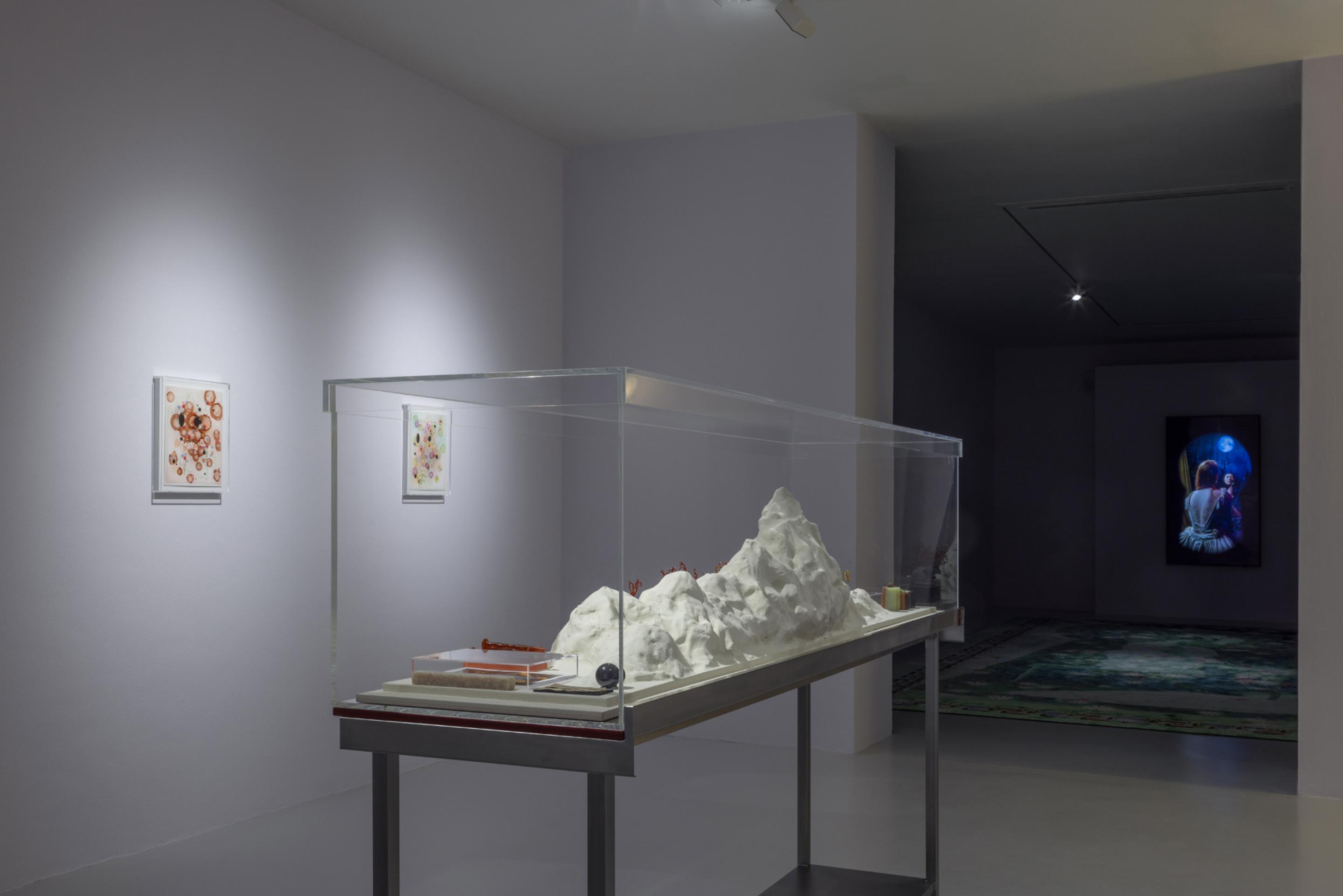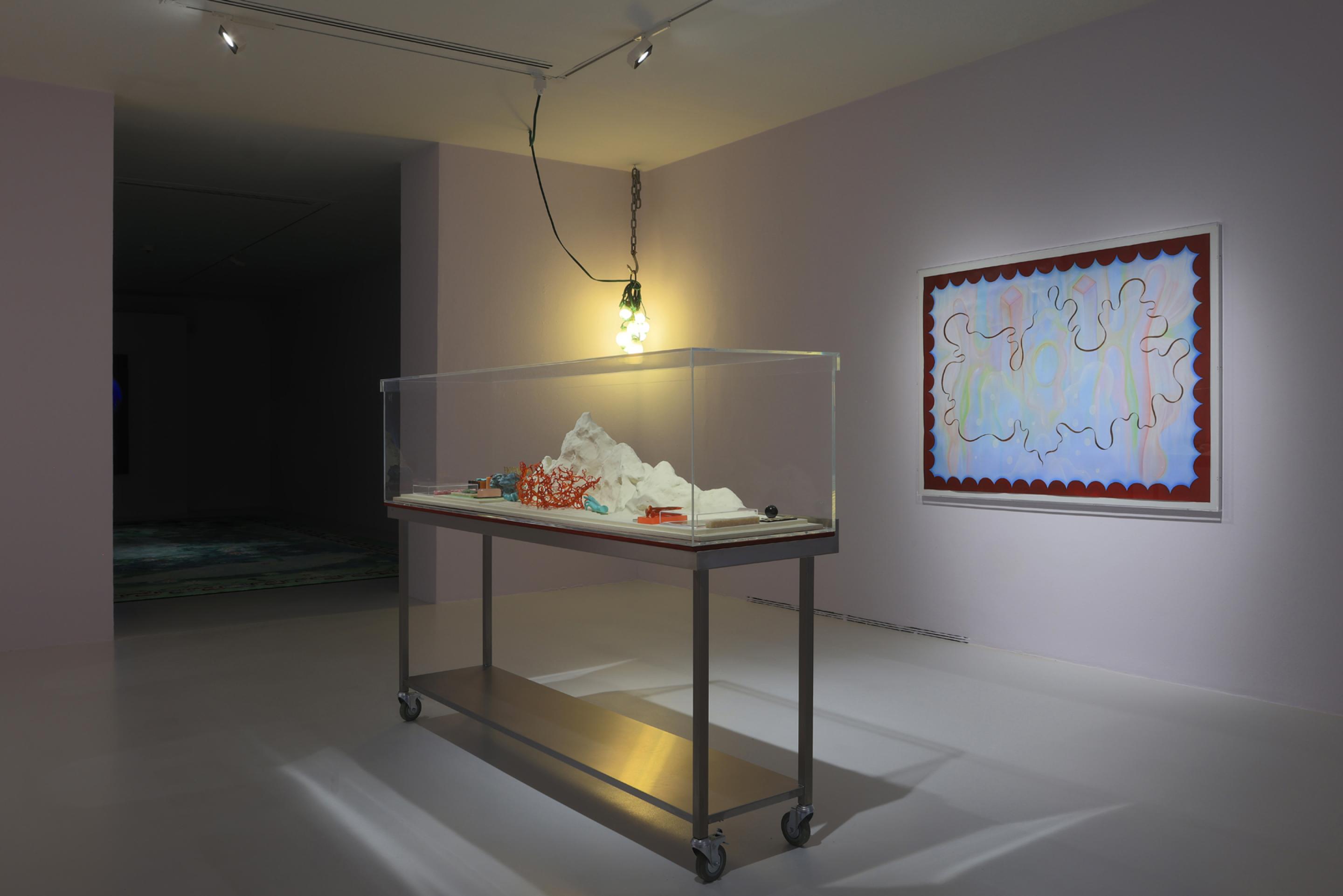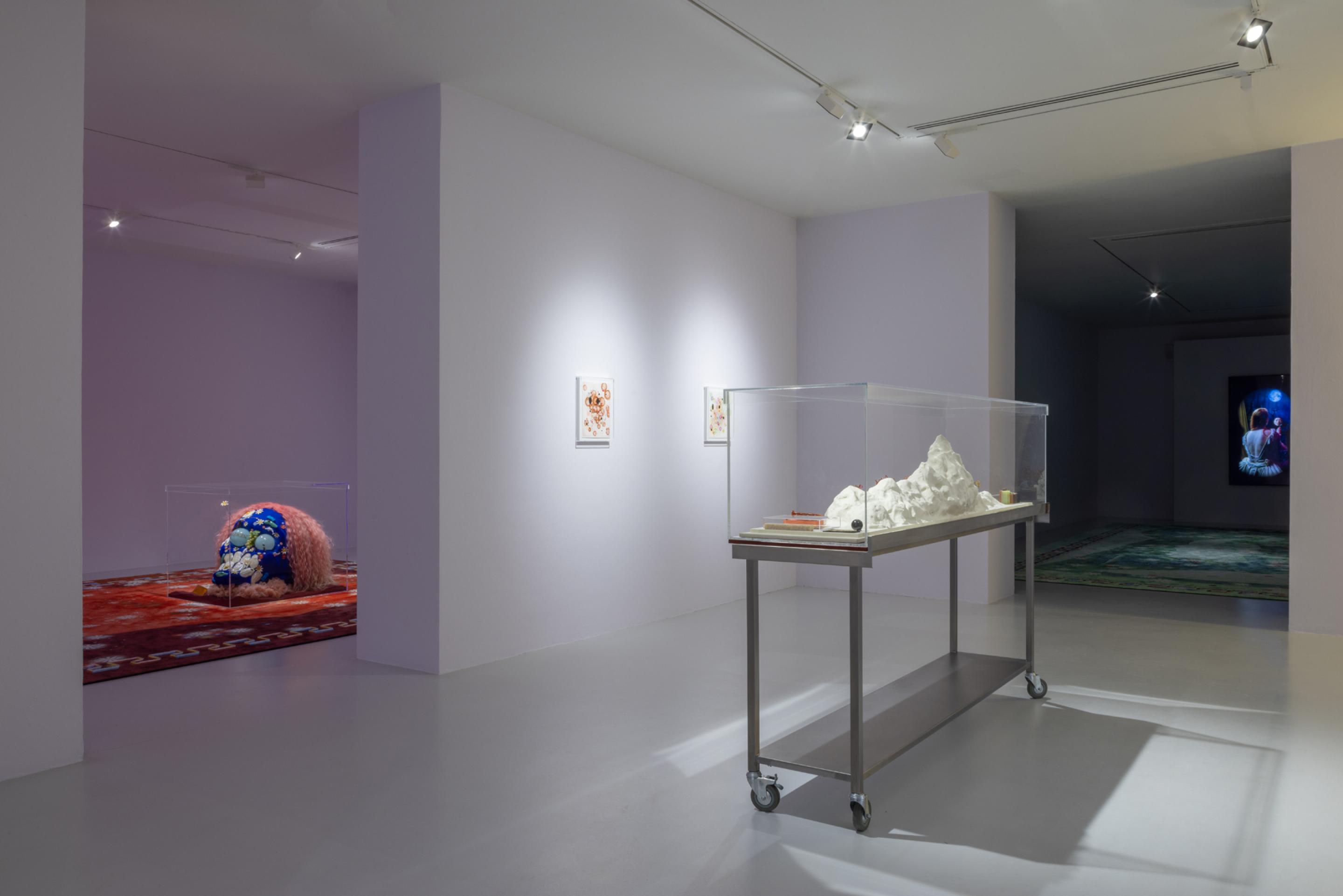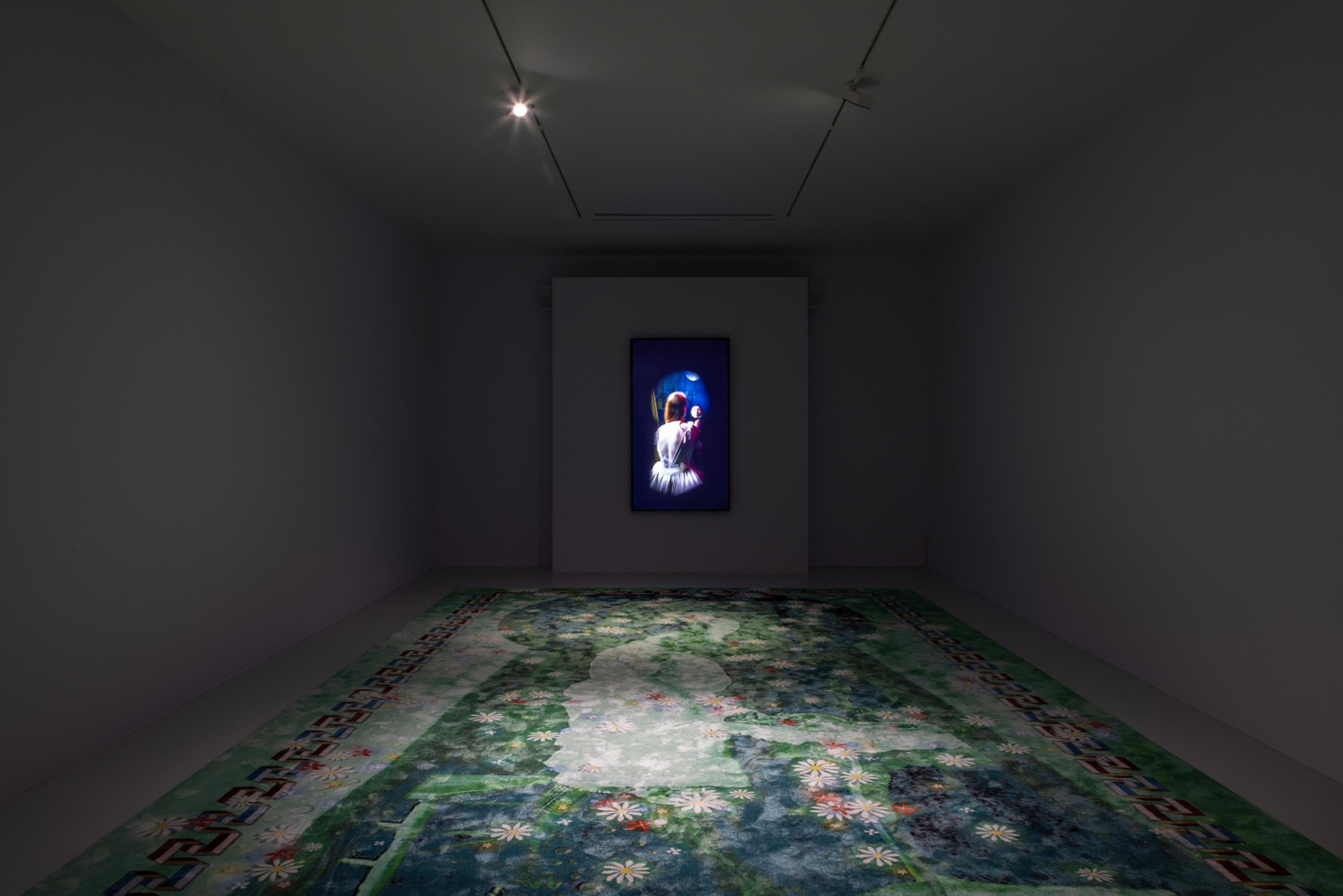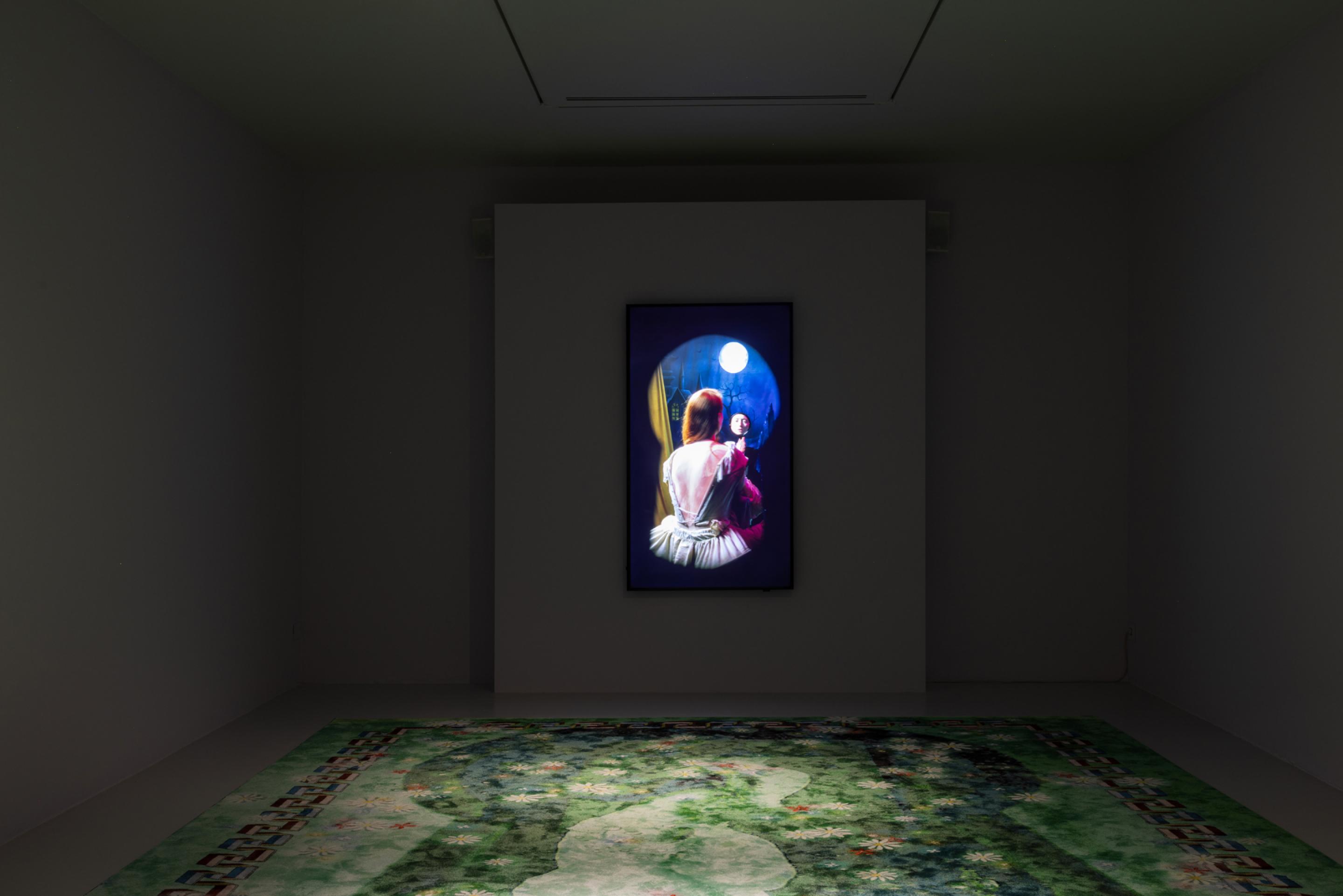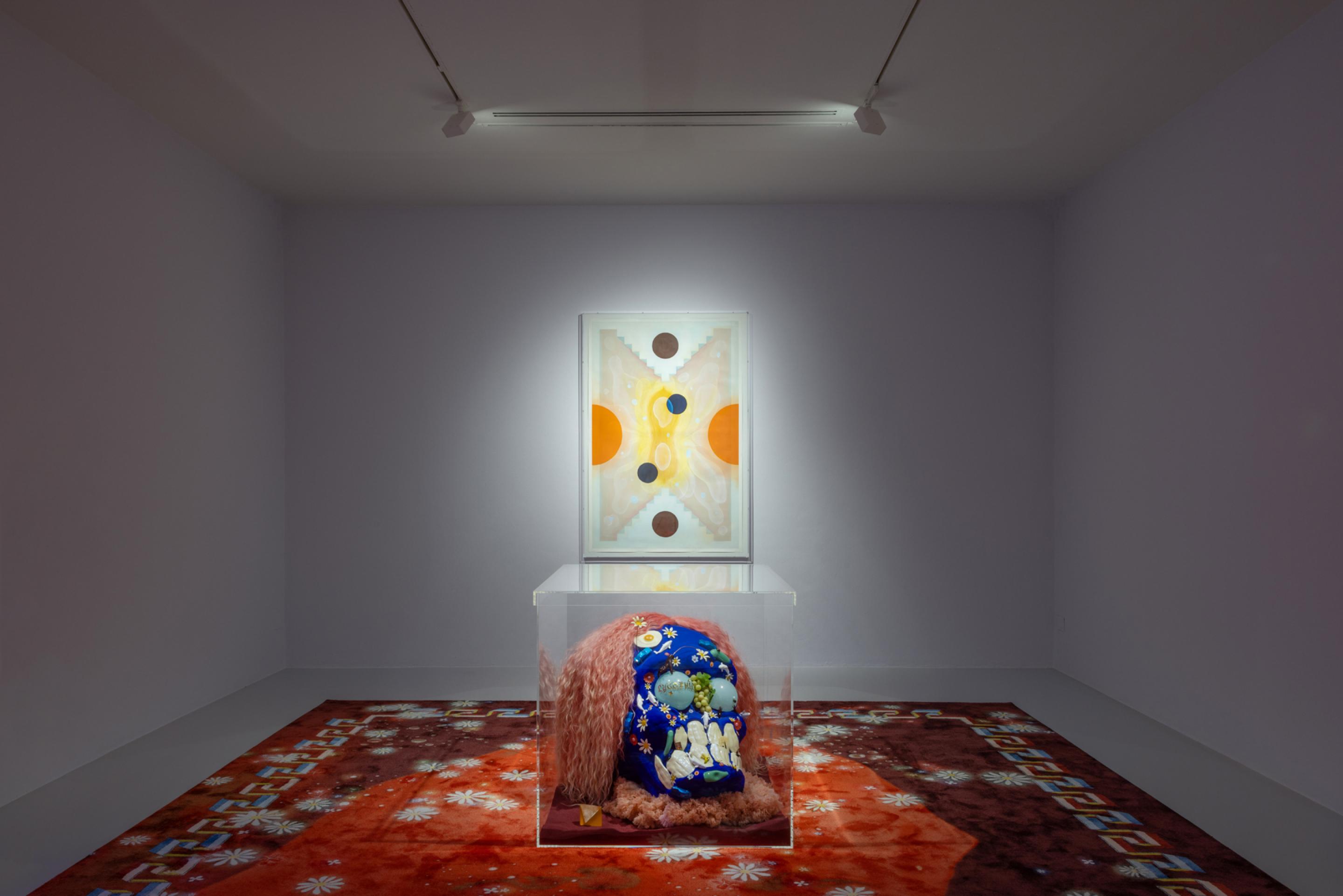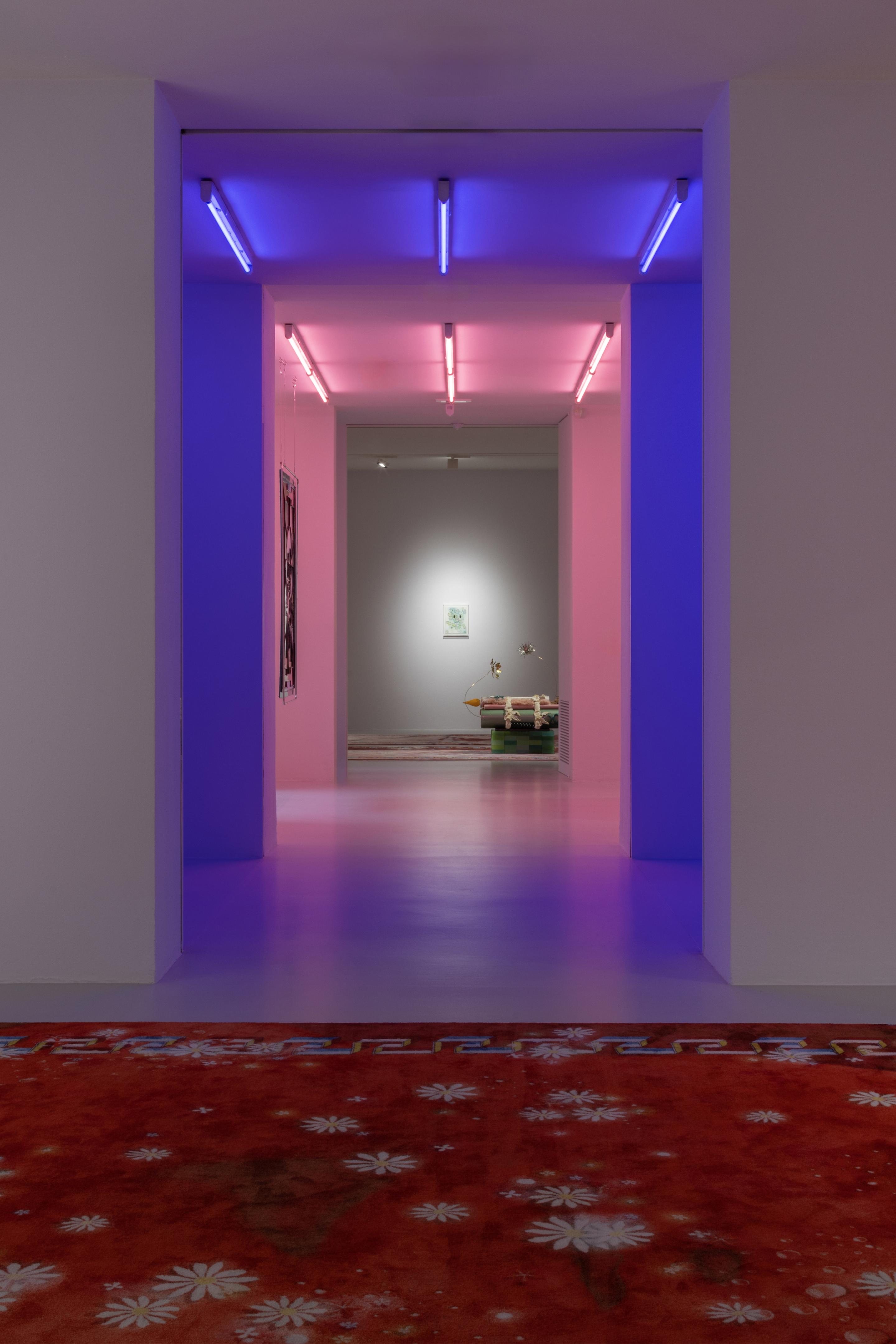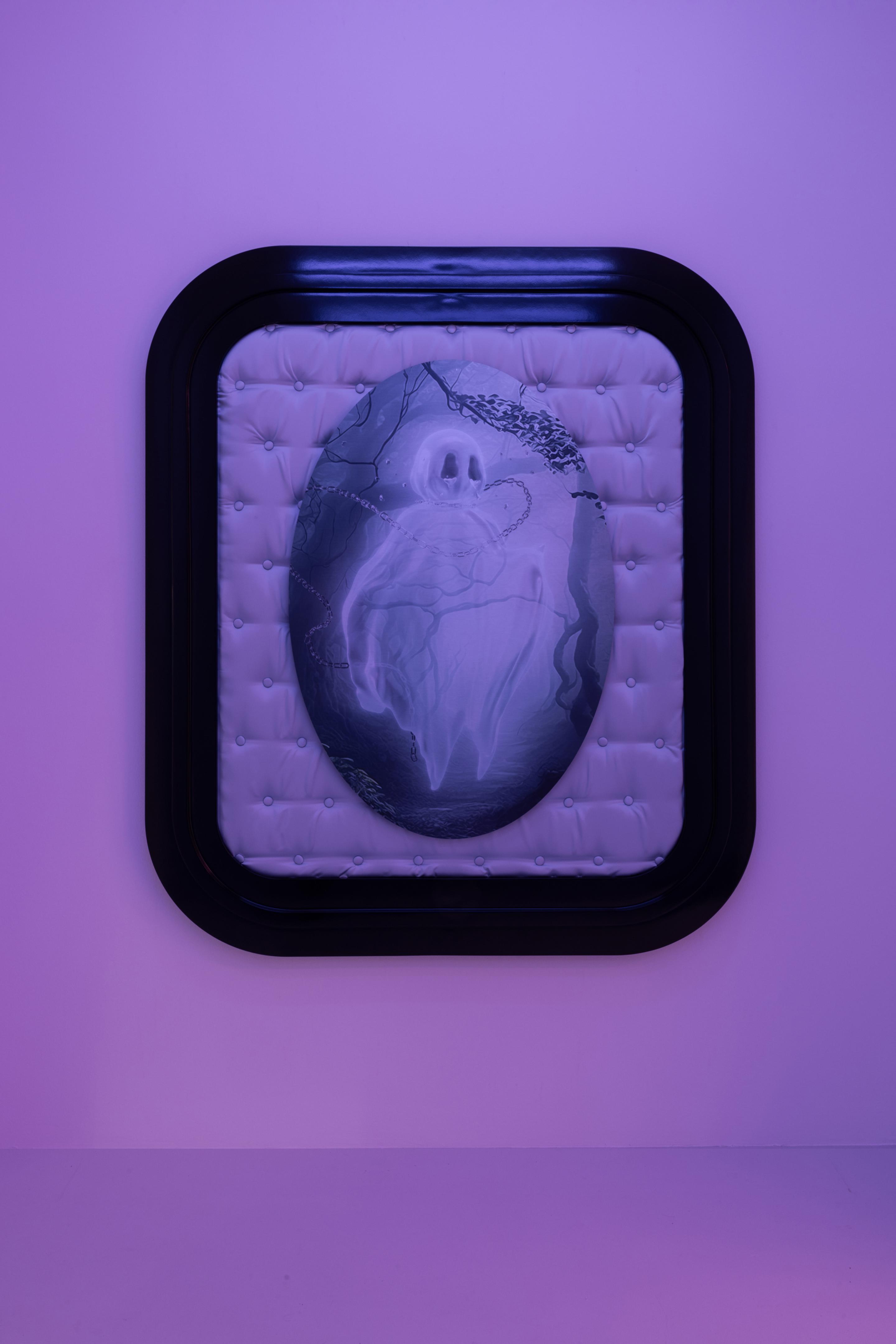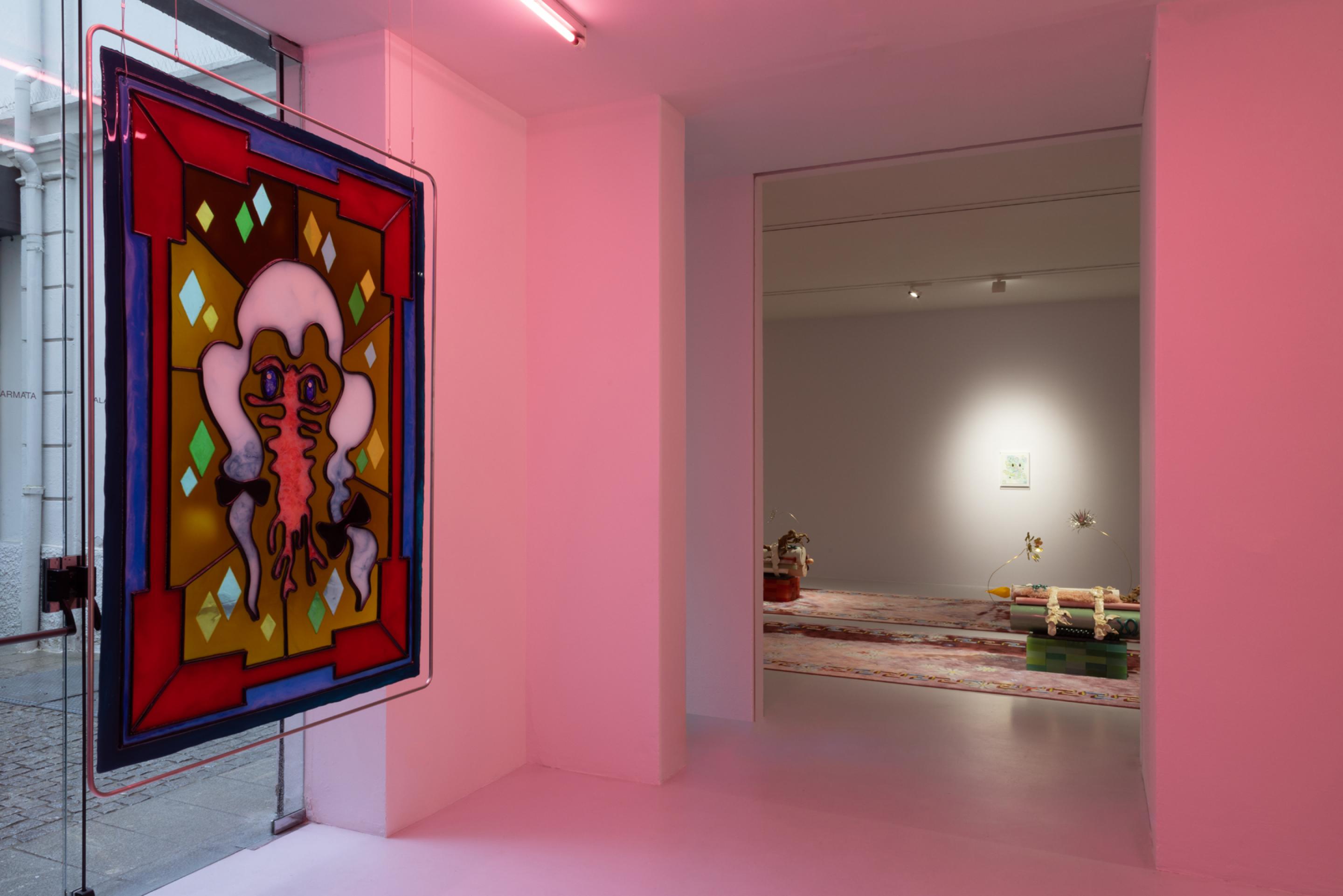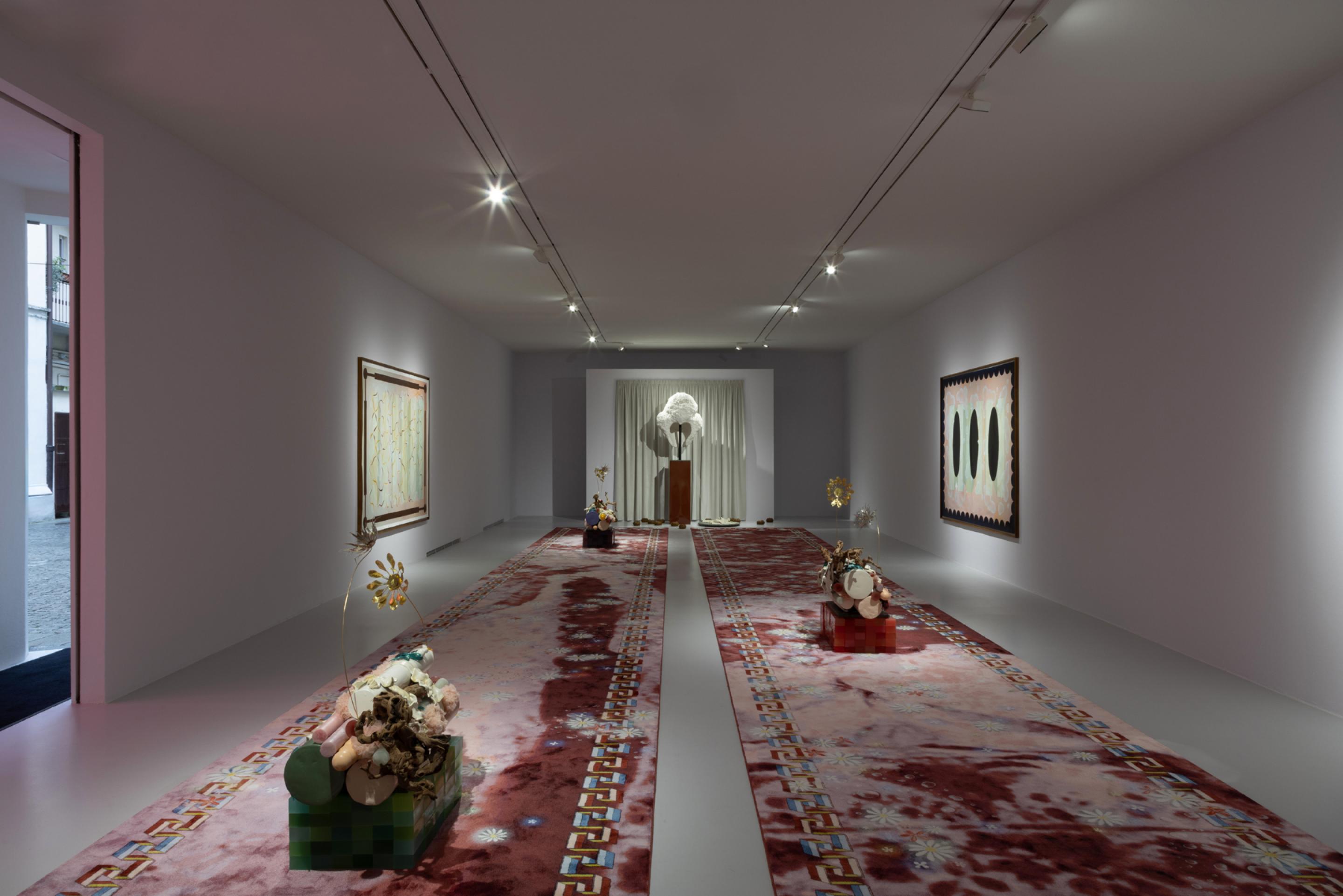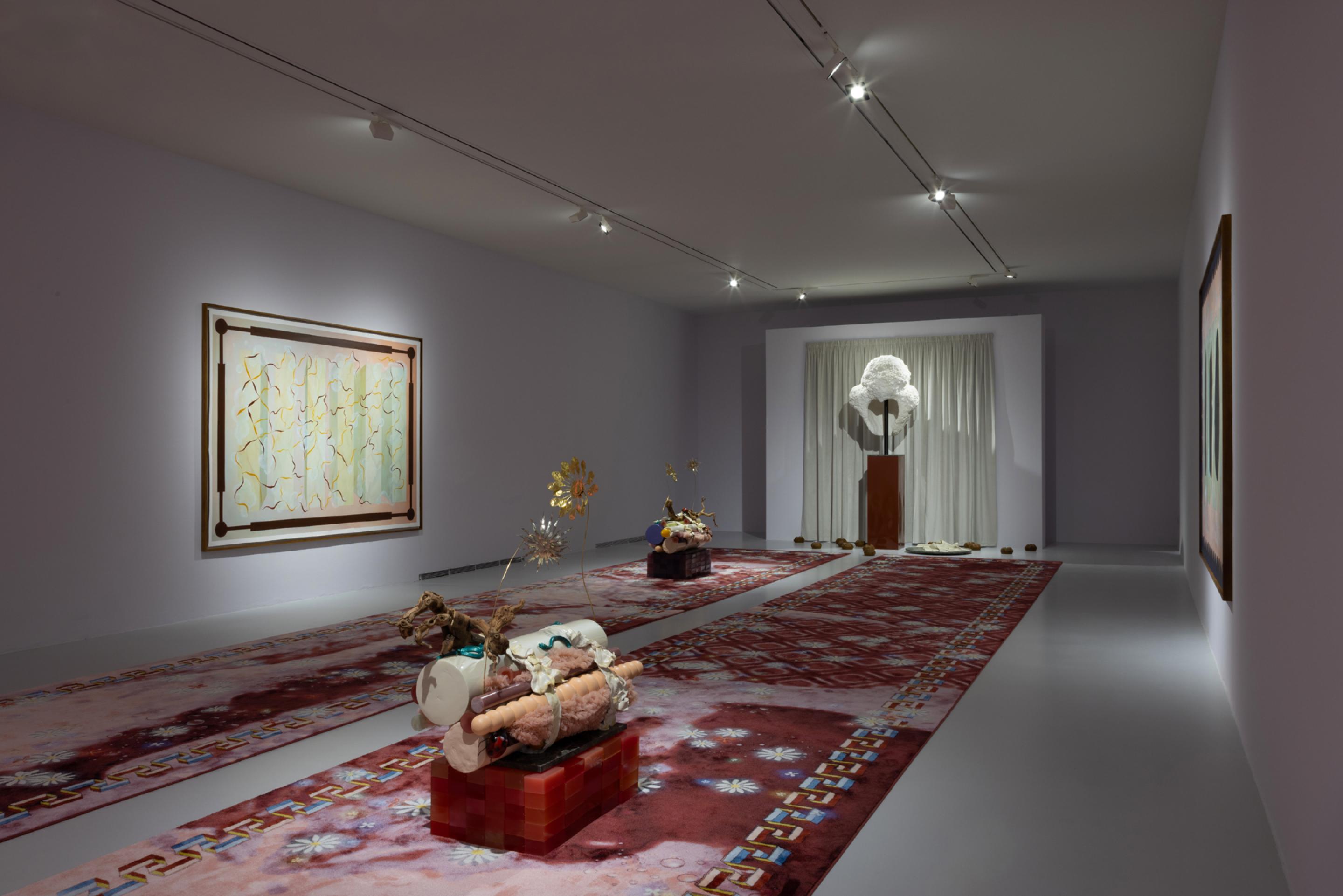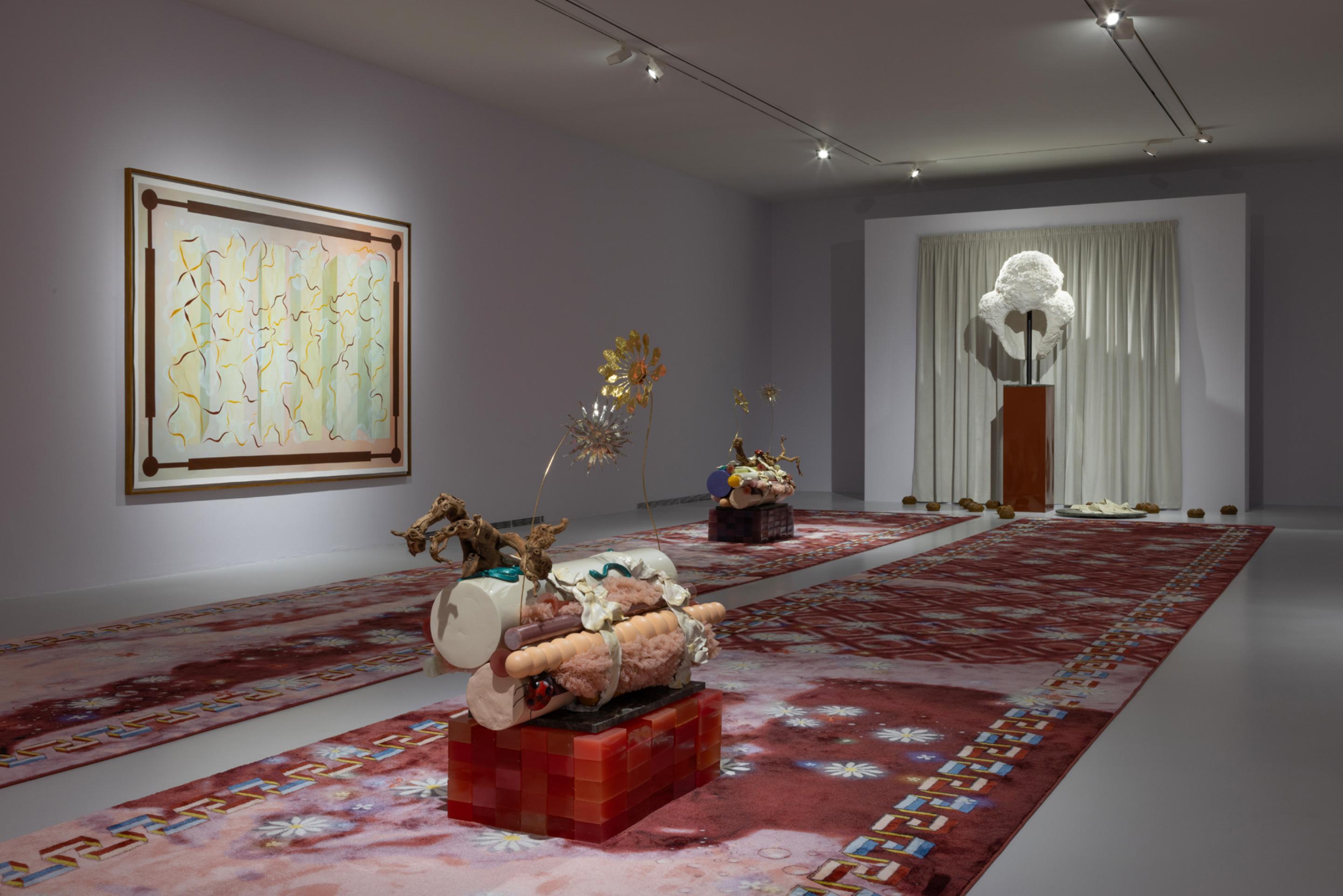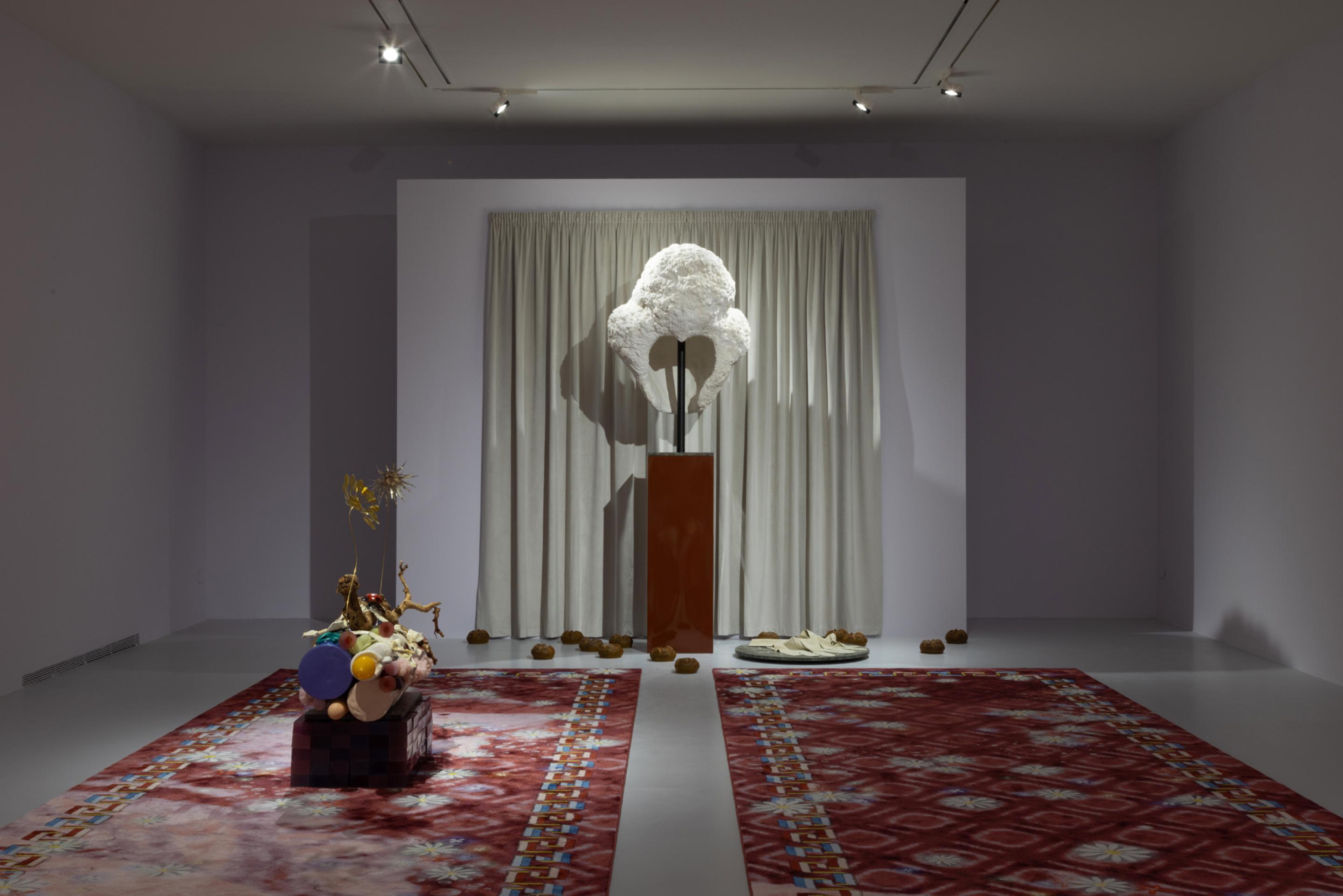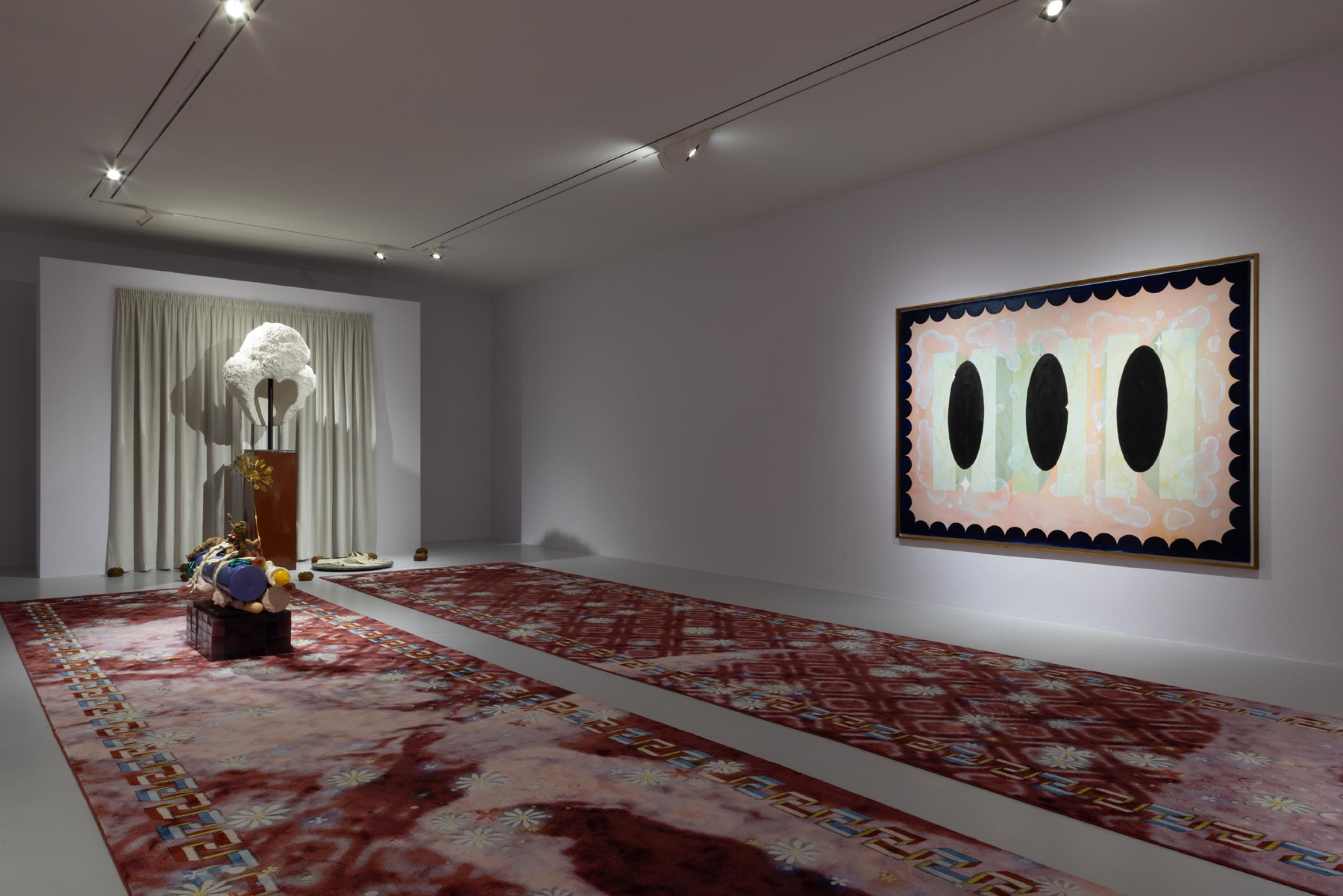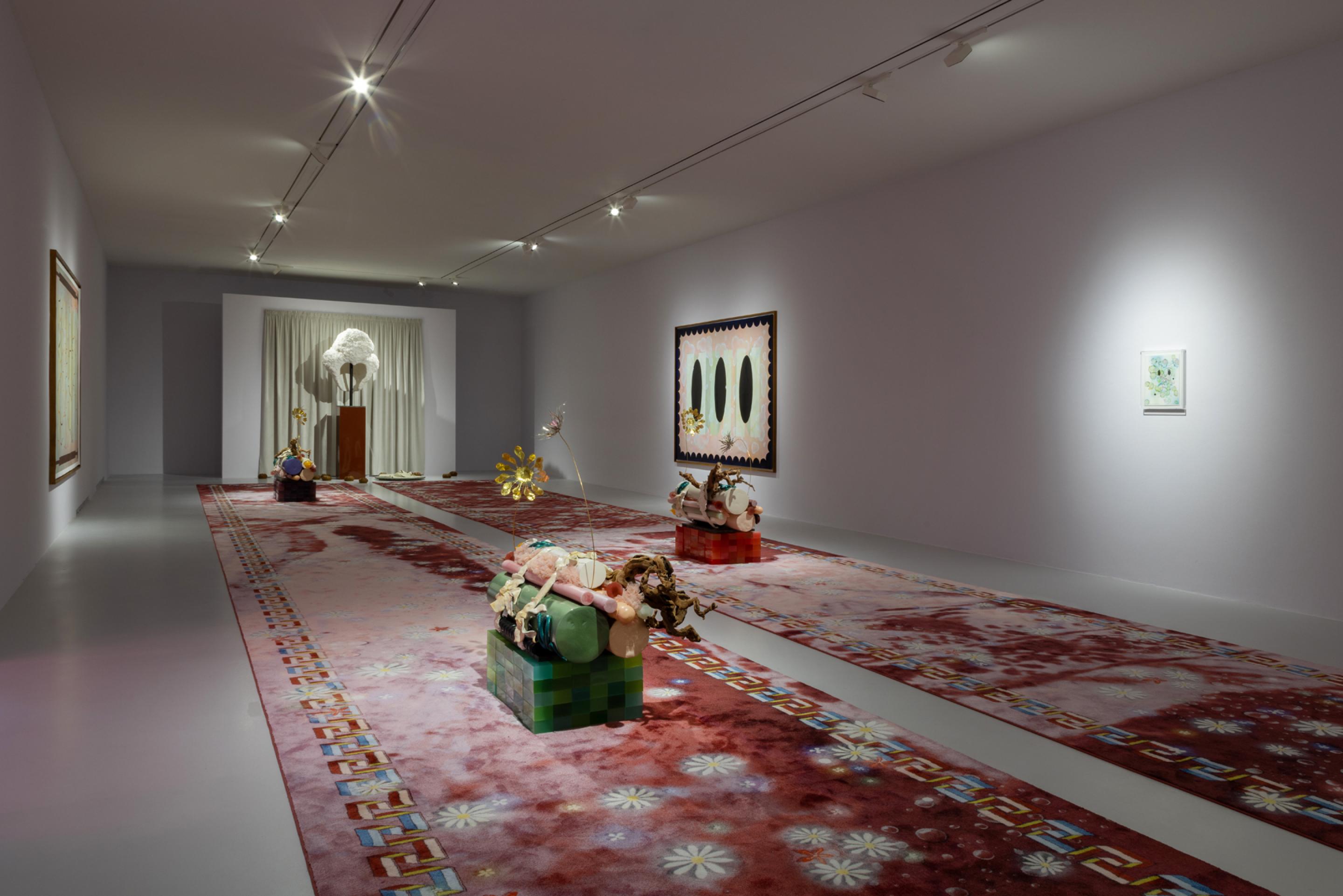TaiSHANI
Lavish Phantoms of the House of Dust
Gió Marconi, Milan
04.10.–20.12.2024
Lavish Phantoms of the House of Dust
Gió Marconi, Milan
04.10.–20.12.2024
TaiSHANI
IT
Tai Shani
Lavish Phantoms of the House of Dust
Inaugurazione: giovedì 3 ottobre 2024; 18-21
4 ottobre – 20 dicembre, 2024
Martedì-sabato; 11-18
Gió Marconi, Via Tadino 15, Milano
Lavish Phantoms of the House of Dust
Lavish Phantoms of the House of Dust [Fastosi fantasmi della Casa della Polvere] è il titolo di un’installazione immersiva di Tai Shani. Di questo nuovo corpus di opere fanno parte sculture, dipinti, disegni e animazioni in cui storie gotiche si intrecciano a oggetti-feticcio e forme illusorie. Ne deriva un ambiente visivo carico di riverberi spettrali e tracce infestanti che si insinuano attraverso le striature del tempo e dei suoi echi.
La splendida serie di seni in vetro soffiato, ciascuno di un verde lattiginoso, illuminato dall’interno da una lampadina incandescente è molto più di un semplice lampadario. Funge infatti da modello delle superfici, dei simboli e delle risonanze psicosociali che compongono i “Fastosi fantasmi della Casa della Polvere”. Il seno, morbido e sensuale per natura e (in entrambi i sensi) donativo, fluttua in totale libertà dal corpo. Si moltiplica (quasi inaspettatamente) e la sua carnosità è sostituita e imitata dal materiale più fragile e friabile, così da spingere tutto l’insieme fino un punto di fantasmagorica delicatezza.
Ciò vuol dire che questo lampadario si muove timidamente verso due direzioni al contempo: da un lato quella carnale e sontuosa del seno; dall’altra la fantasia astratta del femminile come ornamento a rischio di infrangersi, letteralmente penzolante a mezz’aria.
“Fastosi fantasmi”, appunto. Questa mostra si colloca giusto al confine tra eccesso e atrofia, straripamento ed evanescenza. Sono questi lo stato d’animo, il tono, la trama affettiva dei lavori esposti. Tappeti decorati di fotografie spiritiche d’epoca vittoriana, teschi in lapidaria e bizzarra ripetizione che fanno capolino, assemblandosi tra loro, a partire da brandelli di simmetrie e forme psichedeliche, parte integrante dello slang visivo della mostra: alla stregua del già citato dispositivo luminoso, lo spettacolo procede con una serie di trasmogrificazioni e suggestivi effetti che sono al tempo stesso sconcertanti enigmi visivi. Prendiamo il gigantesco paio di guanti in pelle scamosciata: quali mani sono così grandi da poter indossare questo lussuoso accessorio?
La Casa della Polvere: non una semplice casa polverosa, ma una sorta di palazzo signorile o dimora aristocratica il cui simbolo araldico e la cui eredità storica potrebbe esser fatta di detriti polverizzati, ammassi di inconsistente e persistente nulla. Vale a dire, il fastidioso rovescio dell’accumulo, il suo gemello malinconico e cattivo. Il video in mostra presenta un dorso femminile dalla pelle traslucida, dal quale si intravedono muscoli, organi e scheletro, il volto della donna, con il corsetto quasi del tutto slacciato, si riflette – perfettamente incorniciato – nello specchietto che tiene in mano.
“Il mondo per me era un segreto”, pronuncia una voce, “il mondo per te era aperto, una parte del segreto e del me tutto entropico che perisce nell’istante in cui è rivelato”. Si potrebbe dire che l’elegante cosmologia che anima la mostra derivi dalla tensione agente in questa frase: tra “entropia” e “rivelazione”, offuscamento e soffiata, e al tempo stesso in bilico tra sgretolare e costruire, vacillare e affermare. Sono questi i poteri – i privilegi millenari – dei fantasmi. In un’epoca stravolta dalla rovina ipercapitalistica e dalla disgregazione della socialità (che è in fase di insorgere e ricomporsi), tutti noi infestiamo la Casa della Polvere.
Lavish Phantoms of the House of Dust
Inaugurazione: giovedì 3 ottobre 2024; 18-21
4 ottobre – 20 dicembre, 2024
Martedì-sabato; 11-18
Gió Marconi, Via Tadino 15, Milano
Lavish Phantoms of the House of Dust
Lavish Phantoms of the House of Dust [Fastosi fantasmi della Casa della Polvere] è il titolo di un’installazione immersiva di Tai Shani. Di questo nuovo corpus di opere fanno parte sculture, dipinti, disegni e animazioni in cui storie gotiche si intrecciano a oggetti-feticcio e forme illusorie. Ne deriva un ambiente visivo carico di riverberi spettrali e tracce infestanti che si insinuano attraverso le striature del tempo e dei suoi echi.
La splendida serie di seni in vetro soffiato, ciascuno di un verde lattiginoso, illuminato dall’interno da una lampadina incandescente è molto più di un semplice lampadario. Funge infatti da modello delle superfici, dei simboli e delle risonanze psicosociali che compongono i “Fastosi fantasmi della Casa della Polvere”. Il seno, morbido e sensuale per natura e (in entrambi i sensi) donativo, fluttua in totale libertà dal corpo. Si moltiplica (quasi inaspettatamente) e la sua carnosità è sostituita e imitata dal materiale più fragile e friabile, così da spingere tutto l’insieme fino un punto di fantasmagorica delicatezza.
Ciò vuol dire che questo lampadario si muove timidamente verso due direzioni al contempo: da un lato quella carnale e sontuosa del seno; dall’altra la fantasia astratta del femminile come ornamento a rischio di infrangersi, letteralmente penzolante a mezz’aria.
“Fastosi fantasmi”, appunto. Questa mostra si colloca giusto al confine tra eccesso e atrofia, straripamento ed evanescenza. Sono questi lo stato d’animo, il tono, la trama affettiva dei lavori esposti. Tappeti decorati di fotografie spiritiche d’epoca vittoriana, teschi in lapidaria e bizzarra ripetizione che fanno capolino, assemblandosi tra loro, a partire da brandelli di simmetrie e forme psichedeliche, parte integrante dello slang visivo della mostra: alla stregua del già citato dispositivo luminoso, lo spettacolo procede con una serie di trasmogrificazioni e suggestivi effetti che sono al tempo stesso sconcertanti enigmi visivi. Prendiamo il gigantesco paio di guanti in pelle scamosciata: quali mani sono così grandi da poter indossare questo lussuoso accessorio?
La Casa della Polvere: non una semplice casa polverosa, ma una sorta di palazzo signorile o dimora aristocratica il cui simbolo araldico e la cui eredità storica potrebbe esser fatta di detriti polverizzati, ammassi di inconsistente e persistente nulla. Vale a dire, il fastidioso rovescio dell’accumulo, il suo gemello malinconico e cattivo. Il video in mostra presenta un dorso femminile dalla pelle traslucida, dal quale si intravedono muscoli, organi e scheletro, il volto della donna, con il corsetto quasi del tutto slacciato, si riflette – perfettamente incorniciato – nello specchietto che tiene in mano.
“Il mondo per me era un segreto”, pronuncia una voce, “il mondo per te era aperto, una parte del segreto e del me tutto entropico che perisce nell’istante in cui è rivelato”. Si potrebbe dire che l’elegante cosmologia che anima la mostra derivi dalla tensione agente in questa frase: tra “entropia” e “rivelazione”, offuscamento e soffiata, e al tempo stesso in bilico tra sgretolare e costruire, vacillare e affermare. Sono questi i poteri – i privilegi millenari – dei fantasmi. In un’epoca stravolta dalla rovina ipercapitalistica e dalla disgregazione della socialità (che è in fase di insorgere e ricomporsi), tutti noi infestiamo la Casa della Polvere.
EN
Tai Shani
Lavish Phantoms of the House of Dust
Opening: Thursday, October 3, 2024; 6pm-9pm
October 4 – December 20, 2024
From Tuesday to Saturday, 11am – 6pm
Gió Marconi, Via Tadino 15, Milan
Lavish Phantoms of The House of Dust
Lavish Phantoms of the House of Dust is an immersive installation by Tai Shani. This new body of work spans sculpture, paintings, drawings, and animation that weave together gothic histories, fetish objects, and phantasmic forms. The result is a visual environment filled with spectral echoes and haunted traces that tunnel through the striations of time and its echoes.
A brilliant string of blown-glass breasts, each milky green and lit from within by a glowing bulb, is more than a mere chandelier. It also serves as a sample of the surfaces, symbols, and psychosocial resonances that make up “Lavish Phantoms from the House of Dust.” The breast—by nature soft, sensuous, and (in both senses) giving—floats free from any body. It’s also been multiplied (a bit startlingly) and had its flesh replaced and mimicked by the most brittle, fragile material, propelling the assembled contraption to a point of fantastical delicacy.
Which is to say that this chandelier gestures, coyly, in two directions at once: on the one hand at the bosom‘s fleshly, sumptuous aspect, and on the other, at the abstract fantasy of the feminine as shatter-prone ornament, literally dangled in mid-air.
“Lavish phantoms” indeed. This exhibition lies flush with the boundary between overflow and atrophy, brimming and evanescence. That’s the mood, the tone, the affective texture of the gathered pieces. The carpets festooned with Victorian spirit photography imagery, the oddly lapidary repetition of skulls, peeking out and assembling themselves from the shredded psychedelic symmetries and shapes that constitute this exhibition’s visual dialect: like the aforementioned light fixture, the show proceeds by a series of transmogrifications and atmospheric effects that are at the same time taut visual riddles. Take the giant pair of suede gloves: what massive hands could make use of this luxe accessory?
House of Dust—not a mere dusty house, but a kind of lordly palace or aristocratic manse whose heraldic symbol and historical inheritance might be pulverized detritus, heaps of feathery, tenacious nothingness. That is, accumulation’s pesky underside, its mischievous, wistful twin. The video installed here shows the translucent flesh of a woman’s back, beneath we see her muscle, organs and skeleton —her face is reflected, in fact perfectly framed, in the hand mirror she’s holding—with her corset almost completely undone.
“The world to me was a secret,” a voice pronounces, “the world to you was open, a part of the secret and me all entropic, perishing disclosure.” The elegant cosmology that animates this exhibition might be said to follow from the operative tension in this sentence: between “entropy” and “disclosure,” between blur and blurt, at once crumbling and constructing, wavering and asserting. These are the powers—the age-old privileges—of ghosts. In an era reeling from hypercapitalist ruin and shattered (which is to say insurgent, recomposing) sociality, we all haunt the House of Dust.
Lavish Phantoms of the House of Dust
Opening: Thursday, October 3, 2024; 6pm-9pm
October 4 – December 20, 2024
From Tuesday to Saturday, 11am – 6pm
Gió Marconi, Via Tadino 15, Milan
Lavish Phantoms of The House of Dust
Lavish Phantoms of the House of Dust is an immersive installation by Tai Shani. This new body of work spans sculpture, paintings, drawings, and animation that weave together gothic histories, fetish objects, and phantasmic forms. The result is a visual environment filled with spectral echoes and haunted traces that tunnel through the striations of time and its echoes.
A brilliant string of blown-glass breasts, each milky green and lit from within by a glowing bulb, is more than a mere chandelier. It also serves as a sample of the surfaces, symbols, and psychosocial resonances that make up “Lavish Phantoms from the House of Dust.” The breast—by nature soft, sensuous, and (in both senses) giving—floats free from any body. It’s also been multiplied (a bit startlingly) and had its flesh replaced and mimicked by the most brittle, fragile material, propelling the assembled contraption to a point of fantastical delicacy.
Which is to say that this chandelier gestures, coyly, in two directions at once: on the one hand at the bosom‘s fleshly, sumptuous aspect, and on the other, at the abstract fantasy of the feminine as shatter-prone ornament, literally dangled in mid-air.
“Lavish phantoms” indeed. This exhibition lies flush with the boundary between overflow and atrophy, brimming and evanescence. That’s the mood, the tone, the affective texture of the gathered pieces. The carpets festooned with Victorian spirit photography imagery, the oddly lapidary repetition of skulls, peeking out and assembling themselves from the shredded psychedelic symmetries and shapes that constitute this exhibition’s visual dialect: like the aforementioned light fixture, the show proceeds by a series of transmogrifications and atmospheric effects that are at the same time taut visual riddles. Take the giant pair of suede gloves: what massive hands could make use of this luxe accessory?
House of Dust—not a mere dusty house, but a kind of lordly palace or aristocratic manse whose heraldic symbol and historical inheritance might be pulverized detritus, heaps of feathery, tenacious nothingness. That is, accumulation’s pesky underside, its mischievous, wistful twin. The video installed here shows the translucent flesh of a woman’s back, beneath we see her muscle, organs and skeleton —her face is reflected, in fact perfectly framed, in the hand mirror she’s holding—with her corset almost completely undone.
“The world to me was a secret,” a voice pronounces, “the world to you was open, a part of the secret and me all entropic, perishing disclosure.” The elegant cosmology that animates this exhibition might be said to follow from the operative tension in this sentence: between “entropy” and “disclosure,” between blur and blurt, at once crumbling and constructing, wavering and asserting. These are the powers—the age-old privileges—of ghosts. In an era reeling from hypercapitalist ruin and shattered (which is to say insurgent, recomposing) sociality, we all haunt the House of Dust.
